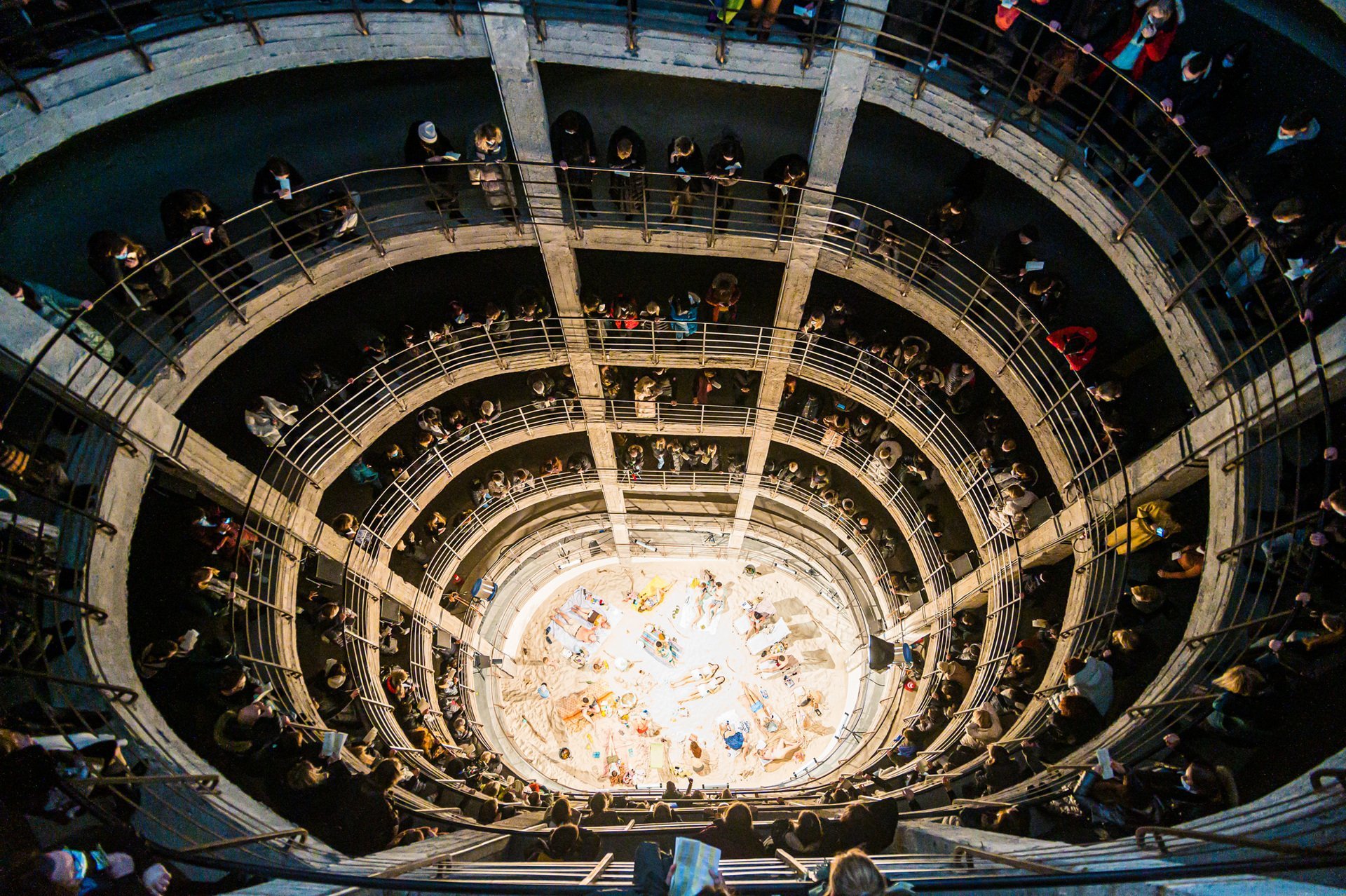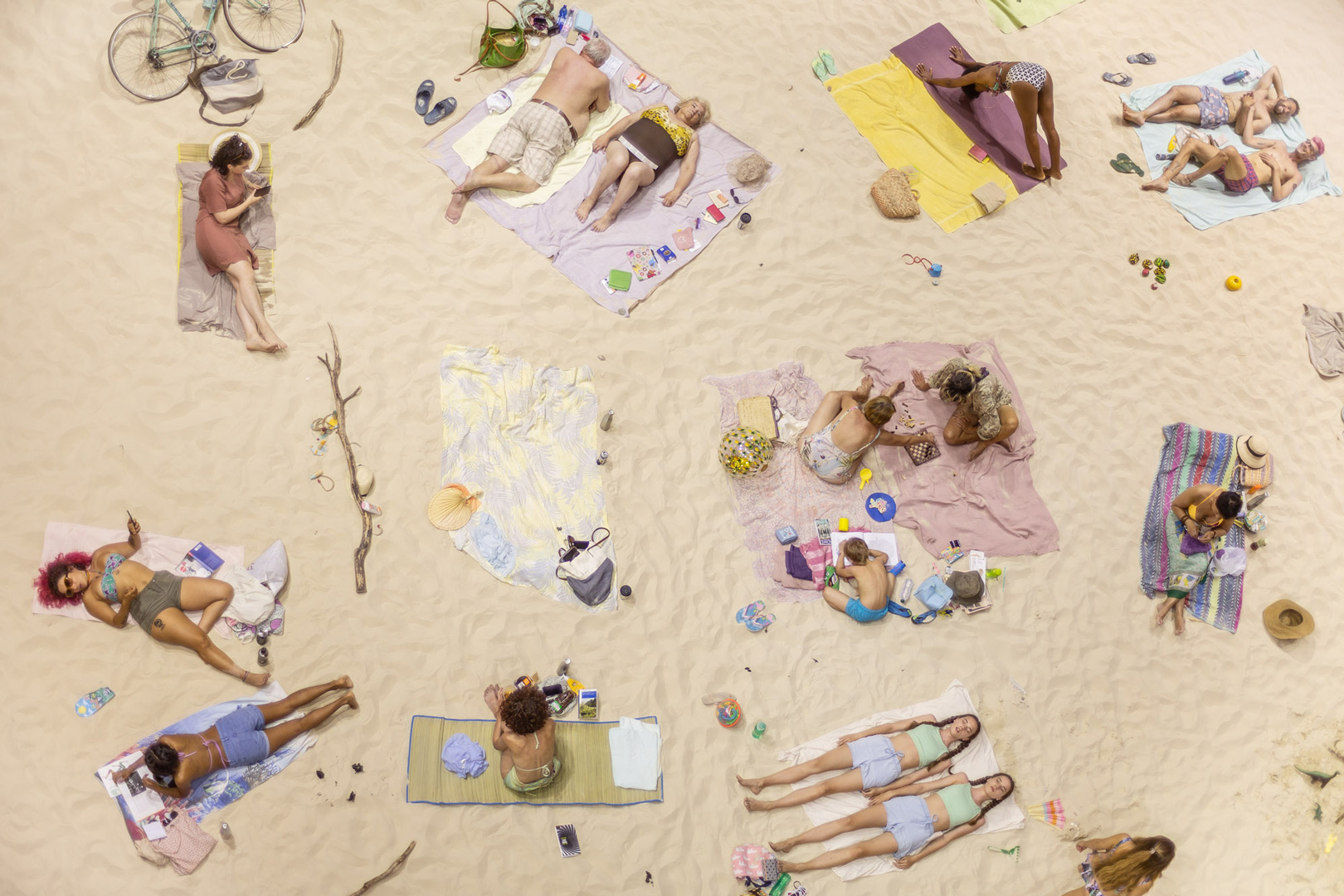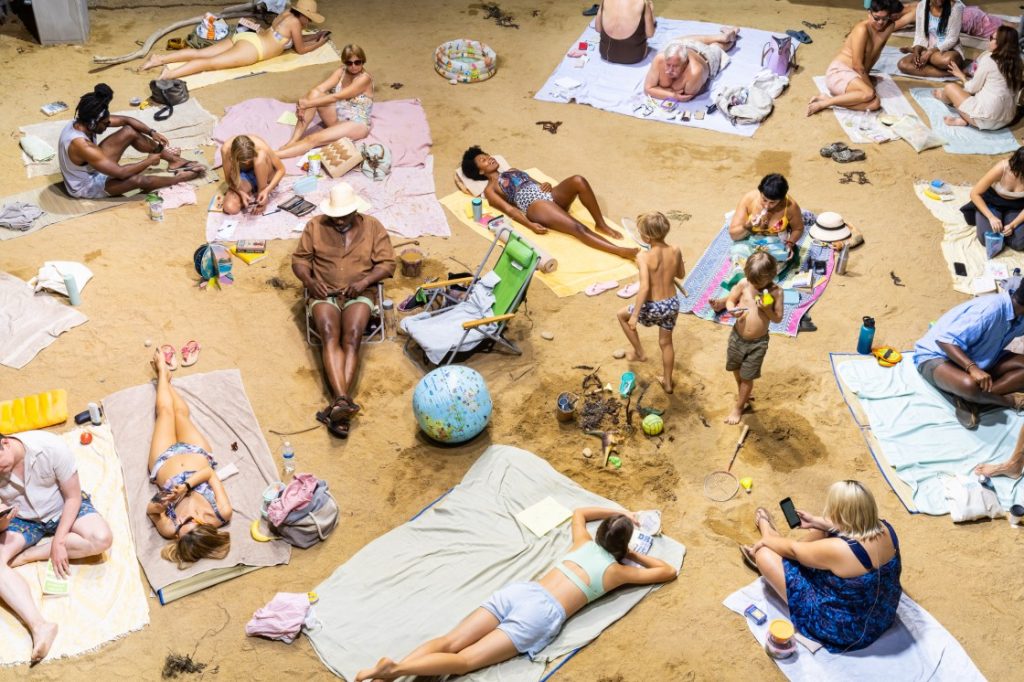Sun & Sea Opera (Marina): Better From Top Down?
Have you noticed those beachy scenes popping up in your Instagram feed recently? With summer here, casual sunbathers might seem pretty normal—but if you look closely something is a little off. Welcome to Sun & Sea (Marina), a Lithuanian opera-performance that’s turning an environmental message into a viral sensation.
What makes Sun & Sea (Marina) stand out is the unexpected contrast it creates. The performance captures a modern paradox: people relaxing and escaping reality while quietly acknowledging the world’s ecological troubles. Created by Rugilė Barzdžiukaitė, Vaiva Grainytė, and Lina Lapelytė, the opera earned international attention when it won the Golden Lion at the 2019 Venice Biennale. Since then, from galleries in New York to art spaces across Europe, it’s gently but powerfully connected with audiences.

Imagine this scene: sunbathers lounging casually on a fake beach, scrolling through their phones or flipping through magazines, all while softly singing songs about ecological anxieties and environmental concerns. The calm visuals mixed with serious themes create an intriguing tension, elevating the performance from just an attractive scene into something deeper and more meaningful.
A major part of what makes this performance unique is how it’s viewed—from above. Moreover, the way the play is viewed has a unique, dynamic relationship with the space in which it is played. This unusual perspective isn’t just a creative choice; it’s meant to change how you experience the show. Looking down, you see everything clearly and almost omnisciently, observing the quiet chaos below. It’s both fascinating and a bit unsettling, gently making you reconsider your role as a passive viewer. Experiencing performance art in such a nontraditional way feels genuinely refreshing.


Interestingly, Sun & Sea (Marina) has gained even more attention online than from live audiences. Every person who sees it in person is matched by countless others discovering it through social media. This digital dynamic raises an important question: does going viral on social media make performance art more impactful or less? Ain’t no simple answer, but definitely a lot to think about.